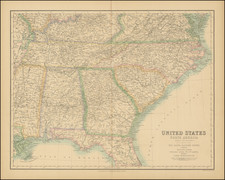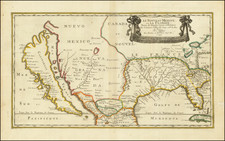Highly detailed chart of the area around Charleston and Charleston Harbor, published by the U.S. Coast Survey in 1863.
This chart was published during the Civil War and annotated to show concentric circles in 1/ mile intervals for a total of 6 miles, depicting the distance from the center of Charleston and annotations including:
- "National" Batteries on Folly Island
- Rebel Batteries in possession of National Forces as of September 7, 1863
- Batteries still held by the Rebels as of September 7, 1863
- Trenches & Batteries of National Army during Siege of Ft. Wagner
- Positions of attacking fleet during action
- Usual positions of Rebel Iron Clads
There are at least 4 charts of similar titles published by the US Coast Survey, with different scales and different annotations, including 1 that shows concentrc circles at 1/4 mile intervals for 11 miles and several without circles, but with similar annotations showing battle positions, etc. See below for links:
- Same Title, different scale, 1/4 mile concentric circles: /gallery/detail/40804mb
- Same Title, different scale, no annotations or concentric circles: hdl.loc.gov/loc.gmd/g3912c.cw0378000
- Same Title, same scale, same concentric circles, but no mention of Iron clads or note below iron clads: http://hdl.loc.gov/loc.gmd/g3912c.cw0382000
- Same Title, different scale, no concentric circles, but includes annotations and key: http://hdl.loc.gov/loc.gmd/g3912c.cw0380000
- Same Title, different scale, 1/2 mile concentric Circles: http://maps.bpl.org/id/14548
We were not able to locate another example of this version of the map.
The United States Office of the Coast Survey began in 1807, when Thomas Jefferson founded the Survey of the Coast. However, the fledgling office was plagued by the War of 1812 and disagreements over whether it should be civilian or military controlled. The entity was re-founded in 1832 with Ferdinand Rudolph Hassler as its superintendent. Although a civilian agency, many military officers served the office; army officers tended to perform the topographic surveys, while naval officers conducted the hydrographic work.
The Survey’s history was greatly affected by larger events in American history. During the Civil War, while the agency was led by Alexander Dallas Bache (Benjamin Franklin’s grandson), the Survey provided the Union army with charts. Survey personnel accompanied blockading squadrons in the field, making new charts in the process.
After the Civil War, as the country was settled, the Coast Survey sent parties to make new maps, employing scientists and naturalists like John Muir and Louis Agassiz in the process. By 1926, the Survey expanded their purview further to include aeronautical charts. During the Great Depression, the Coast Survey employed over 10,000 people and in the Second World War the office oversaw the production of 100 million maps for the Allies. Since 1970, the Coastal and Geodetic Survey has formed part of the National Oceanic and Atmospheric Administration (NOAA) and it is still producing navigational products and services today.










![Carte De La Louisiane Et Du Cours Du Mississipi . . . Juin 1718 [1st State!]](https://storage.googleapis.com/raremaps/img/small/59797.jpg)



![[ Southern Railroads ] Railroad Map of the Southern States Shewing the Southern & Southwestern Railway Connections With Philadelphia. 1862 . . . Prepared by Thomas Kimber Jr., Chairman of the Committee on Inland Transportation of the Board of Trade of Philadelphia](https://storage.googleapis.com/raremaps/img/small/103211.jpg)